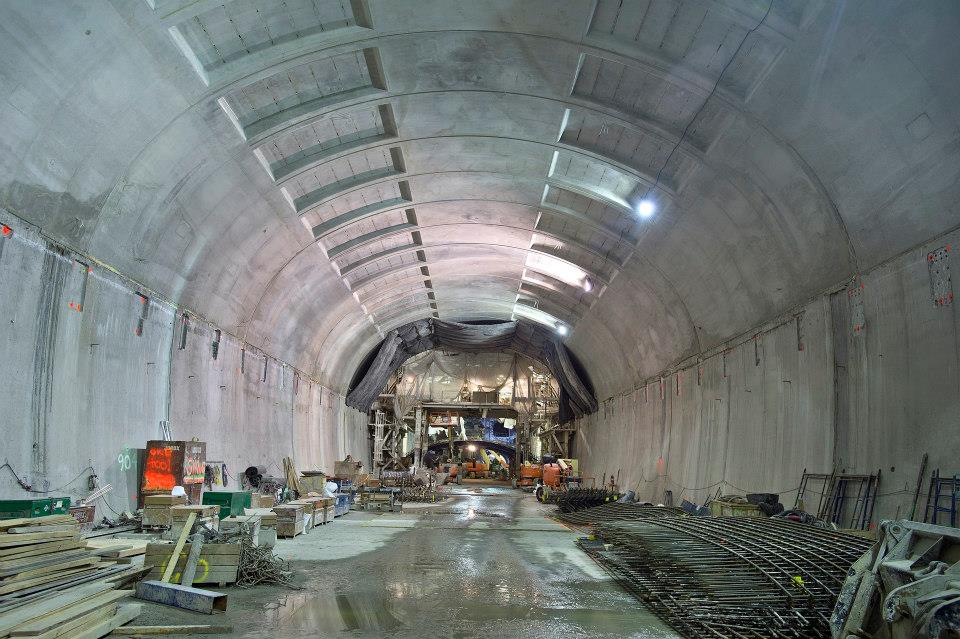
By Larry Penner
How real is the MTA funding plan to support the $51 billion 2020-24 capital plan recently passed by the MTA Board? It is dependent upon taxes and fees including real estate transfer and internet sales tax along with congestion price tolling which, combined, equal $25 billion plus $10.7 billion in anticipated Federal Transit Administration (FTA) funding. There is no guarantee of FTA providing up to $3.5 billion in New Starts funding for the Second Avenue Subway Phase 2 costing almost $7 billion.
In April, the MTA claimed a potential savings between $500 million to $1 billion for this project. This would have reduced the cost from $6 to $5 billion. Promised savings were based upon reduction in excavation for the 125th Street Station and building the 116th Street Station in space no longer needed for other work.
Under the $51 billion 2020-24 capital plan, the cost increased by almost $1 billion raising the price tag closer to $7 billion. The previous federal share of $2 billion (33 percent) now assumes an amount which could end up closer to $3.5 billion (50 percent) by the time the next cost estimate update becomes public. No one has come forward to explain these changes.
Second Avenue Subway Phase 2 is competing against the $12 billion no frills Gateway Tunnel project which is also looking for up to $6 billion from the same federal funding source. The full Gateway Tunnel project cost $29 billion. The odds of both securing FTA Full Funding Grant Agreements are the same as the Yankees playing the Mets in the 2020 Fall Subway World Series. FTA funding both in 2020 would leave little for many other proposed New Starts projects around the nation.
Congestion Pricing does not kick in until January 2021 or the second year of a five-year capital program. The final details of who will pay what have yet to be worked out. What is the implementation schedule for installation of electronic tolling equipment? Elected officials behind the scene continue lobbying for exemptions. The MTA may not be able to count on all $15 billion in congestion pricing funding. A downturn in the economy could also result in less revenue from the Real Estate Transfer tax. There is a surplus of unsold Manhattan luxury apartments with even more coming on the market. How will the Internet Sales tax be collected? Many will avoid this by having family and friends in neighboring states do the purchasing. There are other MTA tax income sources impacted by any future downturn in the economy.
Is it realistic to expect Albany to provide $3 billion in new direct aid given the state still owes $7.3 billion in support for the current MTA for the 2015-2019 plan? The same is true for City Hall providing $3 billion, who still owes $1.8 billion in support as well. The plan assumes the MTA will borrow another $10 billion in new debt. How much will this increase the MTA’s debt service payments? Even without including this new borrowing, the MTA forecasts that its debt will increase 31 percent by 2023 and will cost $3.5 billion or more annually. Moody’s credit agency has said that this plan will add $38 billion in new debt on top of the current $44 billion debt. The MTA could easily end up with a shortfall in the billions.
Most projects contained in this new Capital Plan are still in the conceptual planning stage. Cost estimates can easily change. Few project environmental reviews have been completed. Will the environmental review process follow the State Environmental Quality Uniform Act (SEQUA) or National Environmental Protect Act (NEPA)? Going through the NEPA process is mandatory if the MTA wishes to go after Federal Transit Administration funding. Cost estimates for each project contained in this new Capital Plan will have to be refined as progress proceeds beyond the planning and environmental phases into real and final design and engineering efforts. History has shown that estimated costs for construction usually trend upwards as projects mature toward completion of final design. Progression of final design refines the detailed scope of work necessary to support construction. Costs would be further refined by award of construction contracts followed by any unforeseen site conditions and change orders to the base contracts during the construction phase. The anticipated final potential cost can never be known until reaching beneficial use, acceptance of maintenance manuals for the physical assets, inspection and acceptance, completion of all contract punch list items followed by release of retainage and final payment to the vendor(s).
No money has been included in the $51 billion proposed MTA 2020-24 Five Year Capital Program Plan for electrification of the Port Jefferson LIRR branch. Estimated costs for electrification are $18 million per mile. Riders will have to wait until 2034 before electric service east of Huntington becomes a reality. Extending electrification of the Port Jefferson branch east of Huntington to Port Jefferson has been talked about for decades. Without electrification east of Huntington, Port Jefferson branch riders will not have a one-seat ride to the future Grand Central Terminal. Service is promised to begin by end of December 2022. Thousands of daily LIRR riders from diesel territory branches (including those commuting from stations east of Huntington to Port Jefferson, east of East Williston to Oyster Bay, east of Babylon to Speonk will still have to change at Jamaica for travel to or from the future Grand Central Terminal or Atlantic Avenue Brooklyn. If the Oyster Bay branch is converted to a permanent scoot shuttle service, riders on that line will also have to switch at Mineola, including during rush hours. There is also no money to electrify the Oyster Bay branch beyond East Williston, Greenport branch east of Ronkonkoma and Montauk branch east of Babylon. As a result, riders from diesel territory will have to change at Jamaica well into the future access to Grand Central Terminal.
One bit of good news is that funding has been included for electrification of the seven-mile Central Branch. This little used section of track runs east of Farmingdale on the Ronkokoma line on to Babylon. It would provide additional options for thousands of riders from Babylon. They could travel from the Central Branch to Jamaica via the $2.6 billion Main Line Third Track and on to either Penn Station or future Grand Central Terminal. Electrification of the Central Branch could also afford creation of a new north/south scoot service, running from Huntington via Hicksville and to Babylon.
The next opportunity for funding of electrification of the Port Jefferson branch will be under the future MTA 2025-29 and 2030-34 Five Year Capital Plans. The estimated cost will grow over time from $500 to $750 million. Funding will be necessary to pay for planning, design and engineering, navigating the environmental review process, land acquisition for construction of power sub stations, expansion of commuter parking, potential relocation and/or consolidation of existing stations, new stations and platforms, new electric Multiple Unit car storage yard, new track, third rail and signals. From start to finish will require ten years. Don’t count on riding any electric trains on the Port Jefferson branch until 2034, at the earliest.
There are other higher priorities than the Second Avenue Subway Phase 2 project which will end up costing up to $7 billion. Why not postpone this project until the 2025-29 Five Year Capital Plan? Use the balance of $3.5 billion in unspent local funds designated for this project to accelerate bringing more subway stations up to a state of good repair and into compliance with ADA by adding elevators.
Stop wasting millions on transportation feasibility studies for future system expansion projects that will never happen in our lifetime. Do not initiate any new system expansion projects until each operating agency, NYC Transit bus and subway, MTA bus, Long Island Rail Road and Metro North Rail Road have reached a state of good repair for existing fleet, stations, elevators, escalators, signals, interlockings, track, power, vent plants, yards and shops.
This should also include insuring a majority of subway, Long Island and Metro North commuter rail stations are in compliance with the Americans With Disabilities (ADA) Act. Ensure that maintenance programs for all operating agencies assets are fully funded and completed on time to ensure riders safe uninterrupted reliable service.
 Larry Penner is a transportation historian, writer and advocate who previously worked 31 years for the United States Department of Transportation Federal Transit Administration Region 2 New York Office. This included the development, review, approval and oversight for billions in capital projects and programs for the MTA, NYC Transit, LIRR, Metro North Rail Road MTA Bus along with 30 other transit agencies in NY and NJ.
Larry Penner is a transportation historian, writer and advocate who previously worked 31 years for the United States Department of Transportation Federal Transit Administration Region 2 New York Office. This included the development, review, approval and oversight for billions in capital projects and programs for the MTA, NYC Transit, LIRR, Metro North Rail Road MTA Bus along with 30 other transit agencies in NY and NJ.


















